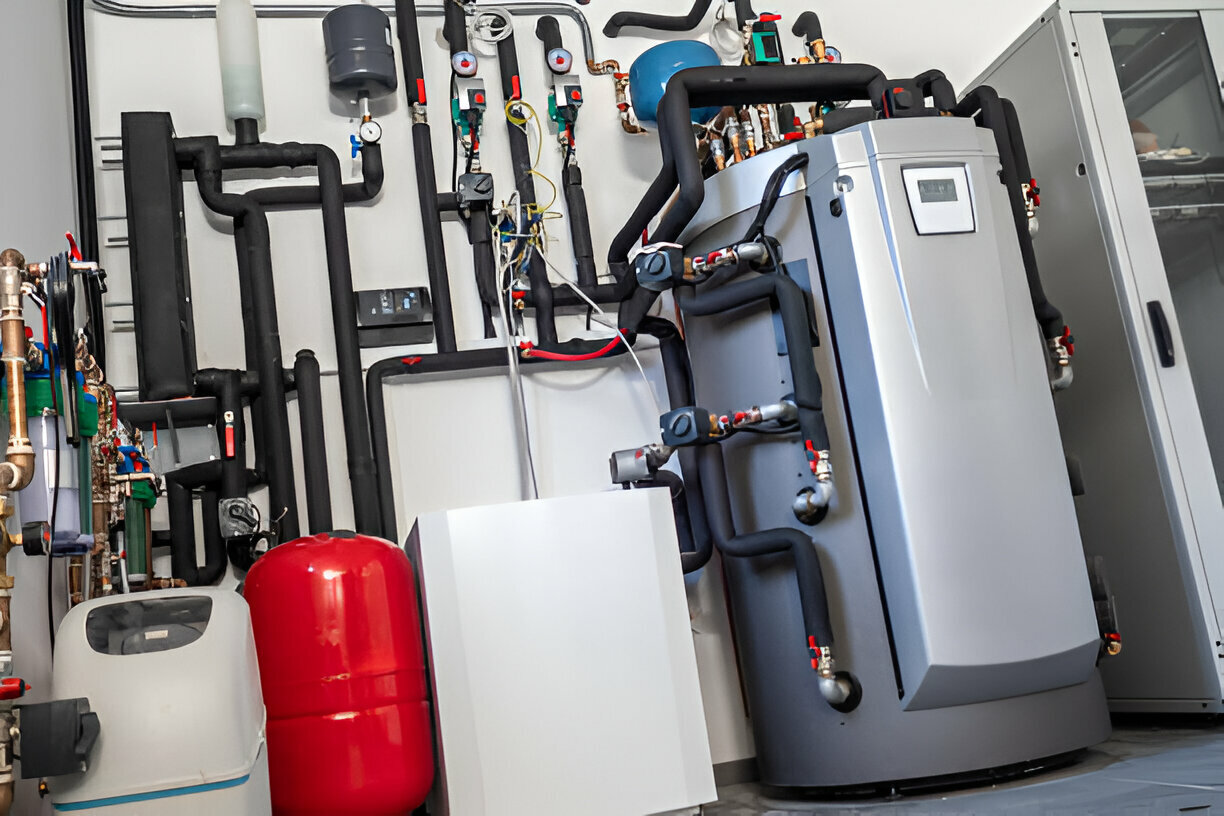
Furnace Installation in Saugus, CA
A properly sized, code-compliant furnace installed to industry standards is the foundation of reliable, efficient home heating. In Saugus, CA, where winters are generally mild but nights can get chilly and wildfire smoke impacts indoor air quality seasonally, a new furnace installation balances comfort, safety, and long-term energy savings. This page explains the full installation process for homeowners in Saugus, CA—from load assessment and model selection to permits, installation steps, warranties, and post-installation testing.
.jpg)
Why a professional furnace installation matters in Saugus, CA
- Local climate: Cooler nights and occasional cold snaps mean furnaces must be sized for nighttime demand without oversizing that wastes energy.
- Indoor air quality: Wildfire smoke and dusty conditions in the Santa Clarita Valley make proper filtration and duct sealing important when installing a new system.
- Code and permits: California energy codes (Title 24) and local building department requirements influence equipment choices and installation practices.A professional installation ensures the furnace operates safely, meets local codes, and performs efficiently for years.
Common furnace issues prompting replacement in Saugus homes
- Frequent repairs and rising service costs on older units
- Uneven heating from aging or undersized systems
- Low efficiency leading to higher gas bills
- Safety concerns such as cracked heat exchangers or poor venting
- Desire to upgrade to high-efficiency models or ductless/electric alternatives for cleaner indoor air
Home heating load assessment and unit sizing
Accurate sizing begins with a heating load calculation (commonly called a Manual J). A proper assessment evaluates:
- Home square footage, ceiling heights, and orientation
- Insulation levels, window types, and air leakage
- Number of occupants and typical thermostat settings
- Local temperature data and specific Saugus microclimate factors
Outcomes of the load assessment:
- Exact furnace capacity recommendation to avoid short-cycling or insufficient heat
- Matching of furnace output to existing ductwork or recommendation to modify ducts for balanced airflowA correctly sized furnace improves comfort and efficiency while extending equipment life.
Comparing high-efficiency furnace options
Key features to consider for Saugus installations:
- AFUE rating: Higher Annual Fuel Utilization Efficiency means lower gas consumption. California installations often favor units with higher AFUE to meet Title 24 efficiency goals.
- Condensing vs non-condensing: Condensing furnaces recover extra heat, improving efficiency but requiring a condensate drain and slightly different venting.
- Two-stage or modulating burners: Provide smoother temperature control and reduced cycling, beneficial in mild but variable climates.
- Variable-speed ECM blower motors: Improve airflow control and reduce noise while saving electricity.
- Thermostat compatibility: Smart or learning thermostats can maximize comfort and efficiency.
Also consider system type: while natural gas furnaces are common, heat pump technology is increasingly efficient in California climates. A comparison during the sizing phase helps determine the best long-term option for each home.
Permits, inspections, and code compliance
For installations in Saugus:
- A permit from the local building department (City of Santa Clarita) is typically required for furnace replacements and new installations.
- Installations must comply with California energy codes (Title 24) and local mechanical and gas codes.
- Required inspections may include rough mechanical, gas line pressure test, and final inspection to verify venting, combustion safety, and proper installation.
Documentation commonly provided at completion includes permit sign-off, equipment labels, and manufacturer warranty information.
Step-by-step installation process and expected timeline
Typical timeline and workflow for a standard furnace replacement:
- Pre-install assessment and load calculation (1 visit)
- Permit application and approval (timeline varies by jurisdiction)
- Site preparation on installation day: turn off utilities and protect floors
- Removal and safe disposal of the old furnace
- Inspect and document ductwork, gas line, flue/venting, and electrical connections
- Install new furnace: secure unit, connect gas, flue, electrical, and condensate drain for condensing units
- Integrate or upgrade thermostat and controls
- Commissioning: start-up, combustion analysis (if gas), check venting and draft, test safety controls
- Airflow balancing and duct sealing where needed
- Clean up and documentation, final inspection scheduling
- Straightforward replacements commonly take one full day (4-8 hours).
- More complex installs involving ductwork modification, flue re-routing, or system upgrades can take 1-3 days.
- Permit processing and inspections add time outside the actual work window.
Post-installation testing, safety checks, and walkthrough
After installation, a thorough commissioning and homeowner walkthrough ensures safe, efficient operation:
- Combustion testing and carbon monoxide checks for gas furnaces
- Verify venting, draft, and proper combustion air
- Static pressure and airflow measurements to confirm balanced delivery
- Thermostat setup, system cycling checks, and explanation of control features
- Demonstration of filter access, recommended filter type, and maintenance intervals
- Documentation of warranties and manufacturer registration instructions
Homeowners should receive clear operational guidance, filter change frequency, and what to watch for in the first few months.
Warranty and manufacturer information
- Modern furnaces typically carry manufacturer warranties covering the heat exchanger, parts, and sometimes labor. Heat exchanger warranties often extend longer than parts warranties; high-end models may offer 10-year heat exchanger and 5-10 year parts coverage.
- Registering the new unit with the manufacturer is important to activate full warranty benefits.
- Be aware of the difference between parts-only warranties and those that include labor; local building permits and professional installation often influence warranty validity.
Long-term benefits and maintenance advice
- Proper installation reduces energy bills, improves comfort, and minimizes future repairs.
- Seasonal maintenance (annual inspection, filter changes, cleaning) preserves efficiency and safety—especially important in Saugus where wildfire smoke can clog filters more quickly.
- Upgrading filtration or adding an air cleaner during installation helps maintain indoor air quality during smoke events.
- Keep permits and warranty documents in a safe place; schedule a follow-up inspection if recommended.
A new furnace installed with precise sizing, careful attention to code compliance, and thorough commissioning delivers dependable warmth, enhanced efficiency, and improved indoor air quality for Saugus homes.





